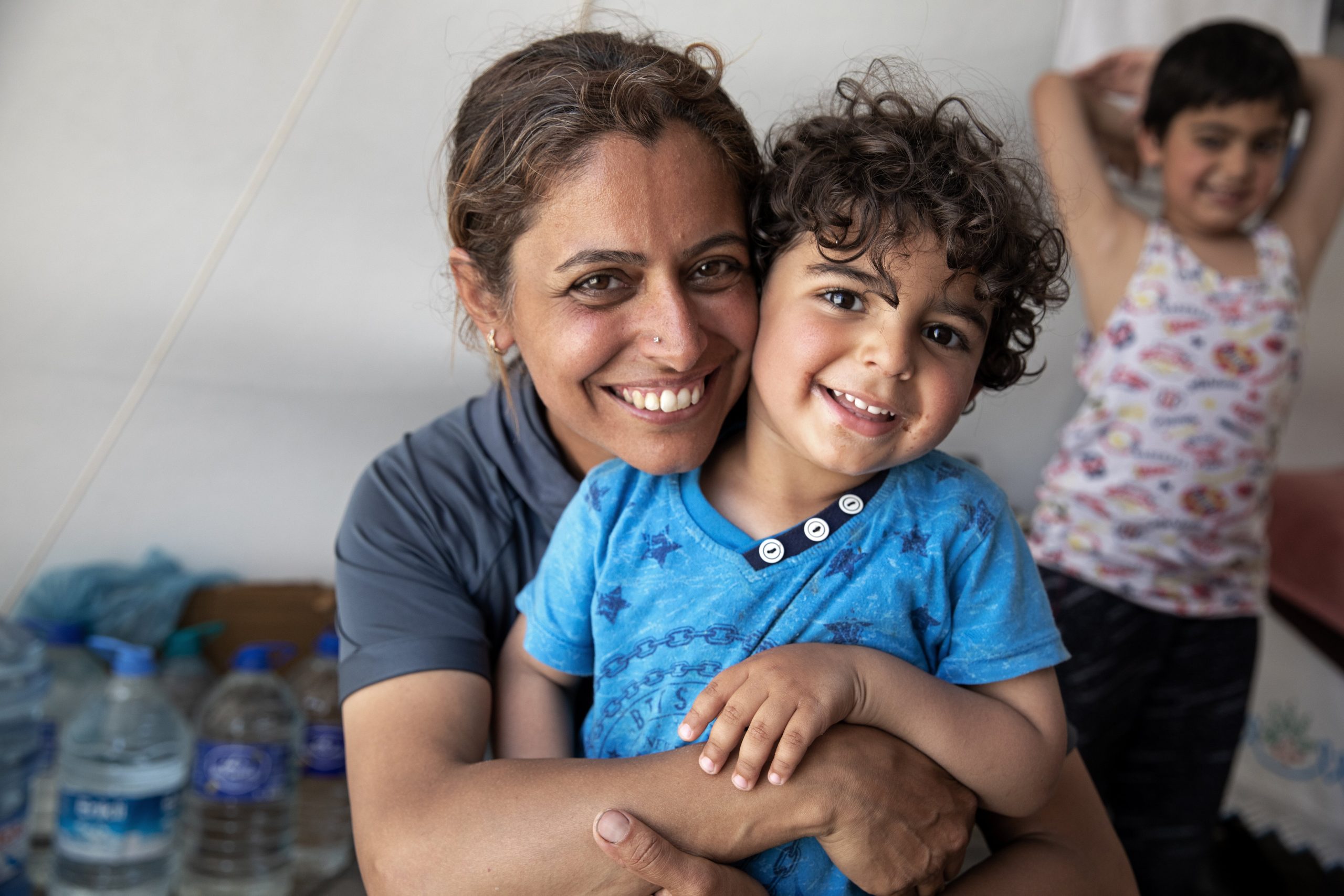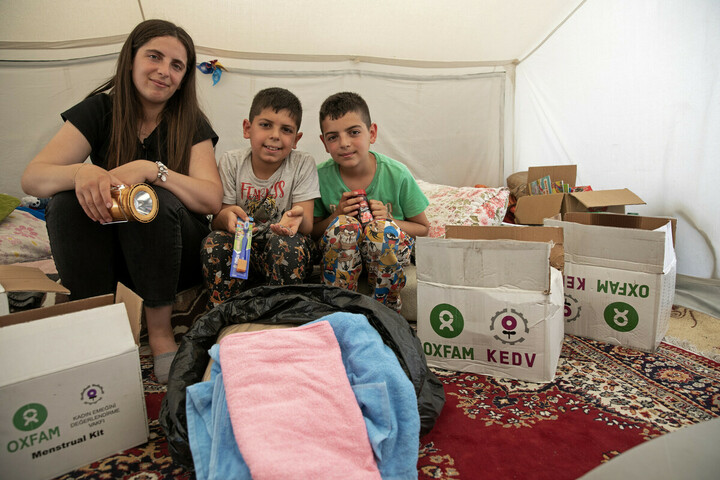
After two powerful earthquakes devastated large parts of southern Türkiye (Turkey) and northern Syria in February, millions have been left homeless.
Many of the buildings that didn’t collapse are now riddled with cracks and will need to be demolished. More than one million people are either living in overcrowded emergency shelters, or in government-supported tent cities where entire families are having to sleep in one large tent.
Oxfam is on the ground working alongside local partners who know their communities best to drive their response.
We’re working to reach 2 million people with life-saving supplies

In the first months after the earthquakes, Oxfam KEDV’s emergency response has reached 24,000 people with emergency relief.
This includes providing hygiene kits to 3,000 households, dignity kits (including incontinence pads and bedsheets) to 1,800 people, and menstrual hygiene kits to 7,200 women and girls in Hatay and Kahramanmaraş provinces.
The hygiene kits come with a wash tub, a jerry can to store clean drinking water, and a box of toothbrushes, toothpaste, shampoo, washing powder, dishwashing detergent, and towels.

In smaller informal camps, Oxfam is providing clean drinking water and building toilets and showers. Oxfam is also distributing cooked meals and food kits, and then cash vouchers once people can access shops in their local communities. This will also support local businesses who have been affected by the disaster.
A long-term recovery plan
Because of the scale of destruction, Oxfam is planning a three-year response. Once the immediate needs of survivors are addressed, Oxfam will work with local partners to create job and income-generating opportunities to help people support themselves.
Refugee communities most at risk
Among the survivors most vulnerable to shocks from this emergency are Syrian refugees, who have been migrating to Türkiye for the last 12 years to escape civil war.
Refugees face increased obstacles to accessing support during times of crisis, due to language barriers, lack of financial resources, information and documentation or fear of arrest or discrimination.
In Hatay, Gaziantep, and Şanlıurfa provinces, one out of every four or five people is a refugee. Many refugees had successfully established new lives in Türkiye, but are now back to living in temporary housing and relying on assistance until they can get back on their feet following the earthquake.